What’s the Best Music Streaming Service for Travelers?
We may earn a commission from purchases you make after clicking links on this site. Learn more.When you’re traveling, whether it’s by plane, train, or automobile, you want your favorite tunes along for the ride. With millions of songs that you can listen to with or without an internet connection, music streaming services make it easier than ever to take the songs you love wherever you go.
For years, Spotify was the dominant music streaming service. Its success caught the eye of several other companies, however, and while we still think it’s your best overall option, there are reasons for some travelers to consider alternatives.
We’ve extensively tested all of the major music streaming services, both at home and while on the road, to come up with some recommendations and help you decide which is right for you. We looked at several factors, including the price, audio quality, device integration, and how well it works (or doesn’t) overseas.
Here’s what we found.
Choosing the Best Music Streaming Service
Price
Price is of course a major factor for any subscription service. Music streaming services have similar pricing for the most part, with some offering family and student plans that can save you a few bucks a month.
A few, like Spotify, offer free versions with limited features and periodic advertisements. Most offer a free trial of some sort so that you can test out the premium services before you buy.
Lossless Audio
In brief, lossless audio formats preserve sound quality. Lossless audio still reduces file sizes to some degree, but the algorithms are designed to preserve audio data and maintain the integrity of the original source.
This is opposed to ‘lossy’ audio, such as the commonly-used MP3 or AAC formats, which use algorithms that remove some audio data. File sizes are smaller than lossless formats, but sound quality is poorer. If you consider yourself an audiophile, look for lossless audio.
Those formats are only available on certain services, however, sometimes at a higher cost. If you’re perfectly satisfied with the sound quality of tracks downloaded from iTunes, for example, save yourself some money by going for the standard options.
Integrations
Your devices, operating system, and voice control preferences may help determine the music streaming service you choose. If all of your tech is from Google, YouTube Music is a more natural fit than getting your music through Amazon, and vice versa.
This matters most if you plan on using voice commands, as streaming services work best when paired with the matched branded assistant: eg. Amazon Music + Alexa on the Amazon Echo.
Best Overall: Spotify
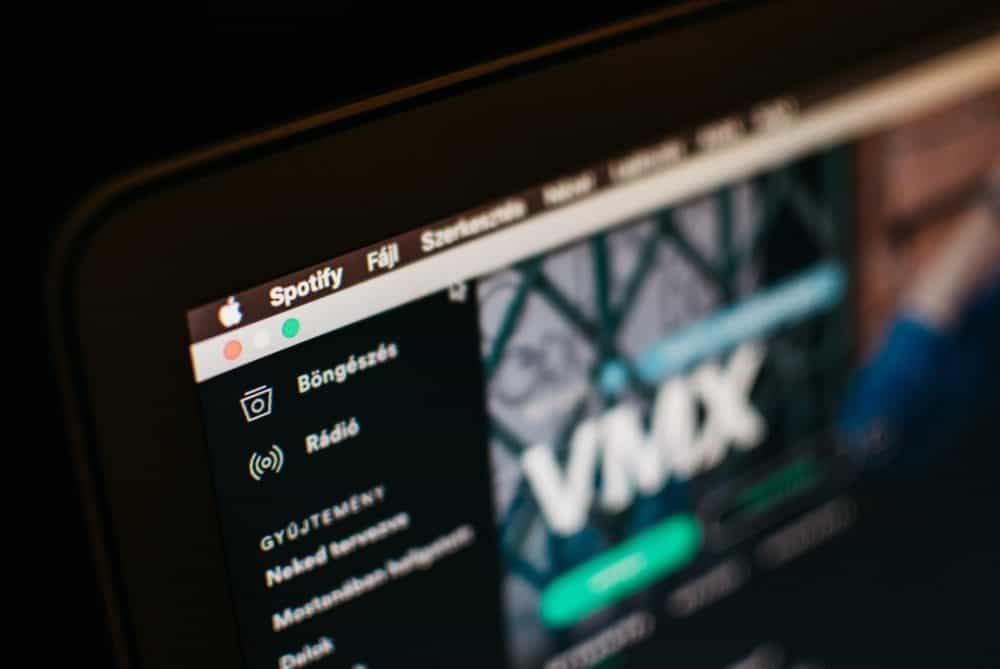
Spotify is available in pretty much every country and territory with works from over 11 million artists. There are over 100 million songs available and over five million podcast titles. It’s a leading streaming service with a lot to offer, and the first pricing tier is absolutely free.
For use on the road, Spotify says of its free account: “You can use a free Spotify account in a different country or region for up to 14 days. After that, you need to get Premium or change your account settings.”
Spotify Premium also makes songs available offline, and gets rid of the ads that pop up every few songs with a free account. The ability to listen to your music offline is a serious plus if you’re roaming and trying to reduce data usage, or are on a plane or somewhere else with no cell service.
Even if you’re not listening offline, you have plenty of control over how much mobile data you use. There’s a dedicated ‘data saver’ setting, plus four streaming quality options from low to very high.
Spotify Premium has a few different pricing tiers. Individual costs $10.99 per month, while for two people living at the same address, it’s $14.99.
The Family plan ($16.99/month) bumps that limit up to six accounts, while the Student plan costs $5.99/month and is open to students enrolled at a US Title IV accredited college or university. Prices vary somewhat by your country of residence.
Don’t feel like making decisions? No problem, Spotify will do it for you. It creates curated lists based on the kind of music you’ve been listening to (including the recent addition of an AI-powered DJ), and you can make your own playlists and easily share them with friends.
I’ve been using Spotify while traveling for many years now, starting out with the free service and switching to Premium a few months later. It’s one of the very few subscription services I actually pay for, and given how much I use it both on the road and while at home, it feels like a bargain.
Pros
- Free version (with ads)
- Family and student plans available
- Podcast and video content
- Sophisticated music algorithms
- Control over how much data you use
Cons
- No lossless audio
Best for Exclusive Content: Tidal
Tidal is best-known for its high-quality sound and exclusive content. Over the years, Tidal has had access to exclusive releases from artists like Jay-Z, Beyonce, and Kanye West before they became available on other streaming services.
The service offers a library of over 100 million tracks and 650,000 videos. Tidal has several different plans, including standard ($10.99/month) and family ($16.99/month), with 40-50% discounts for students, first responders, and military.
There’s a free plan available for US users, with lower sound quality and limited skips on mobile. If you’re elsewhere in the world, new users get a free 30-day trial of the paid tiers, so either way you can test the service out before committing to pay for it.
Many of the features that set Tidal apart from the competition come with a noticeable price jump. The Tidal HiFi Plus plan is $19.99 per month, offering lossless sound quality in FLAC, MQA, and other high-end formats.
Tidal provides exceptional sound quality, and provides plenty of behind-the-scenes content to go with it. From exclusive interviews and documentaries to special events, if you’re a dedicated fan of a popular artist, there’s a good chance you’ll find stuff on Tidal that you simply can’t access anywhere else.
Tidal is available in 60+ countries on Windows, Mac, iOS, Android, and Kindle Fire devices. The app works offline and has no problem connecting while traveling abroad.
Pros
- Exclusive content
- Lossless audio available (Tidal HiFi Plus)
- Master source recordings available
- Music videos
- Wide range of plans and discounts
Cons
- Free version only available in the US
- Limited features
- HiFi Plus lossless plan is expensive
Best for Lossless Audio: Apple Music
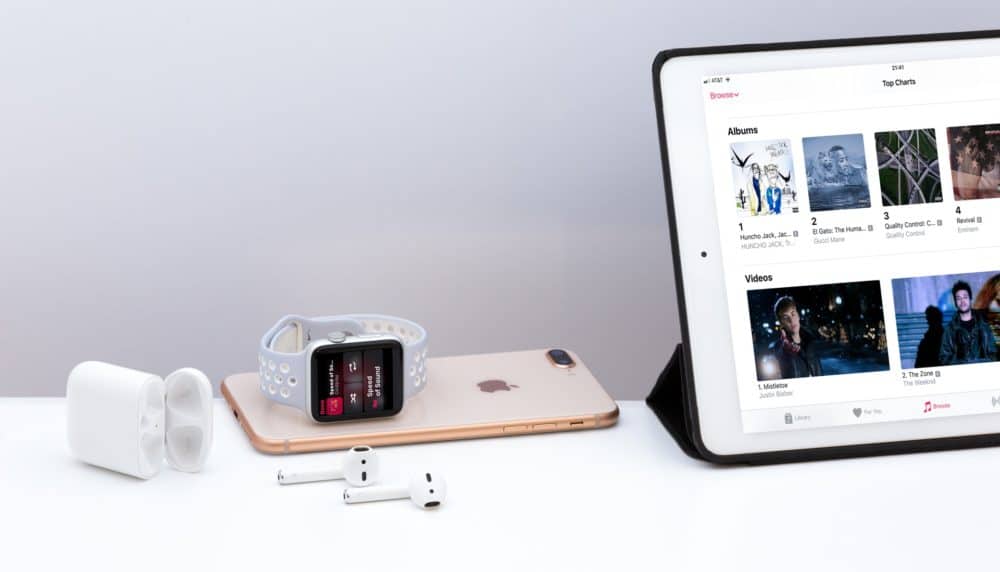
Apple Music is available in 167 countries. It boasts a catalog of over 100 million tracks and integrates with your existing iCloud music library, so you can also access songs you’ve already purchased on iTunes from one online location.
As an Apple user, you’ll find it integrates seamlessly with Siri and Apple Watch. Apple Music has a range of different plan options, some of which are the same as other streaming services, and a few unique options.
There’s a “Voice” plan, for instance, which works only on Apple devices and doesn’t include any video content. It also doesn’t give access to lossless audio or offline playback, but on the upside, it’s cheap ($4.99/month) and still has the full music catalog available.
Speaking of lossless audio, the biggest deal with Apple Music was the announcement back in 2021 that the entire library was now available in high-end lossless formats. While it uses a lot of data, there’s no question that the quality difference is very noticeable.
If that’s what you’re after, you’ll need a full plan: they’re $10.99 per month for an individual account, $16.99 for families, and $5.99 for students. There’s no free tier, but you do get an initial one-month trial, extended to six months if you buy AirPods/Beats earbuds or headphones, or HomePod speakers.
Looking for something fresh to listen to? Apple’s Beats1 radio station is curated and hosted by real DJs and does a good job of finding new tracks. The service also has auto-generated playlists, but we’ve found Spotify’s version does a better job of surfacing songs we want to listen to.
Apple Music works with iTunes on desktop (macOS and Windows), and there are dedicated apps for iOS and Android. You shouldn’t have a problem accessing your music while traveling, though you may find only certain tracks are available depending on your location.
Apple’s fine print says, “Certain Services and Content available to you in your Home Country may not be available to you when traveling outside of your Home Country.” Just make sure you check in with Apple servers by using your account online at least every 30 days.
Pros
- Available in 167 countries
- Integrates seamlessly with Apple devices
- Playlists curated by both people and algorithms
- Wide range of plans
- Lossless audio available by default on most plans
Cons
- No free option
Best If You Have Amazon Prime: Amazon Music
If you’ve bought something from Amazon recently, chances are you’ve been hit with an ad telling you about the benefits of the company’s music service. Anyone with an Amazon Prime membership gets access to Prime Music‘s full 100-million song catalog, ad-free.
With it, you can shuffle your favorite artists, albums, and playlists, but can’t choose specific tracks to listen to or download unless they’re part of a specified All-Access Playlist. It’s all a bit confusing, but hey, if you’re paying for Prime already, it’s a valuable freebie.
If you want lossless audio and the ability to pick and choose which songs you want to listen to or download, you’ll need to stump up for Amazon Music Unlimited instead. It’s $10.99 per month for an individual subscription, or there’s a six-account family plan for $16.99/month.
If you’re willing to stream to only one Amazon Echo or Fire TV device, there’s also a cost-effective $4.99/month option, while students pay $5.99/month. Apps are available for Windows and macOS, iOS and Android, along with Amazon’s own FireOS devices.
There’s also a web version of the player, which we’d probably use in preference to the desktop versions: they aren’t the greatest.
As far as travel goes, Amazon gets a little vague. The company makes it seem like travelers are able to use the service with no problem while abroad, but when you dig into the details, it only guarantees offline playback.
Amazon says you can take advantage of your membership benefits while on a trip: “You can easily download your pick of thousands of music titles and playlists from Amazon Music for offline playback on Android and iOS devices and Fire tablets.”
If you download your music ahead of time, you’re good to go, but there’s a chance you could run into an issue eventually if you travel regularly.
Pros
- Lossless audio available
- Works seamlessly with Alexa-enabled speakers
- Useful “free” tier for Amazon Prime members
- Cheap single-device plan
Cons
- Unintuitive desktop app
Best For Discovering Local Music: YouTube Music
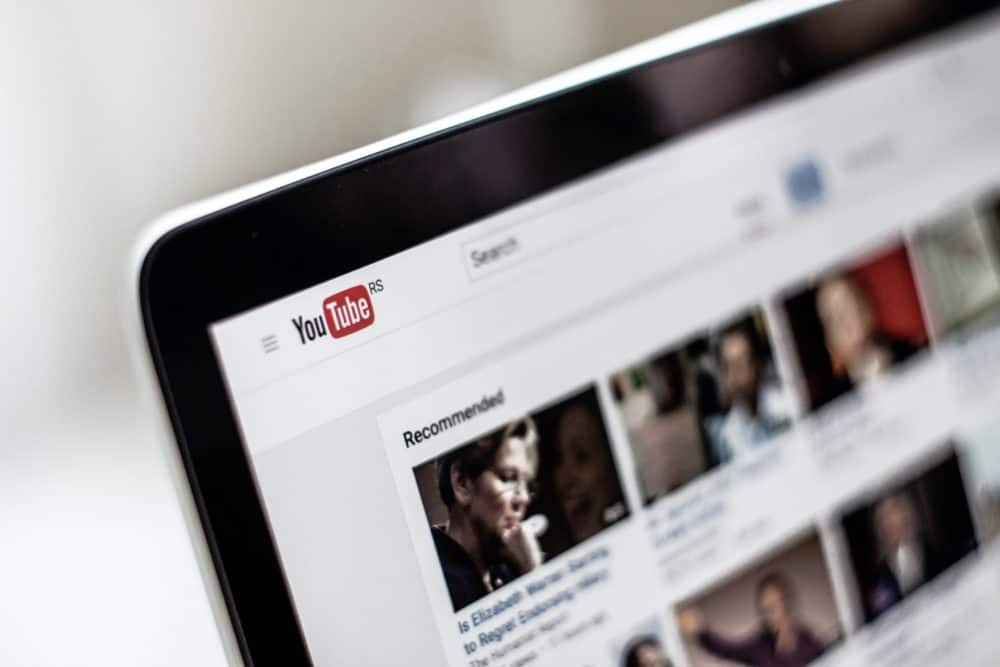
You undoubtedly regularly use YouTube’s video service pretty regularly, but unless you’ve gone looking for it, you may not have come across the company’s music service.
The basic YouTube Music service is free, as long as you’re happy to listen to ads and have the app or browser window active the whole time. While podcasts generally keep working when you switch away to a different app or window, music doesn’t.
Upgrade to YouTube Music Premium, though, and you’ll lose those limitations: songs will happily play in the background, there’ll be no ads, and you can download songs for offline listening.
The paid version costs $10.99/month for an individual account, $16.99/month for a family plan, or $5.49 for students. You can save money by signing up for a year on the individual account, and if you happen to already be paying for YouTube Premium (the equivalent service for video), then Music Premium is included.
For a while, Premium users complained that any time they traveled somewhere the service wasn’t available (it’s in 100 countries), it would stop working on their device and offline downloads would be deleted.
Google remedied this a few years back, however: customers now have access to the same features at home and abroad. There are some time limits, though, as YouTube Music’s help page explains:
“If you’re a YouTube Music Premium member, you can access your paid membership benefits and music library in the YouTube Music app, even if you’re in a country/region where YouTube Music isn’t available. The music content that’s available to you at home will travel with you for six months, so you can keep enjoying your listening experience. Your music downloads will remain available for 30 days without Internet connection. Podcast downloads are not available outside the US.”
In addition to now being fully available while traveling, YouTube Music also offers smart suggestions for playlists based on your location. With location-based recommendations turned on, you’ll receive personalized music recommendations from wherever you are. This neat feature can help you get to know the local music scene as you travel the globe.
Pros
- Works seamlessly with Google Assistant-enabled speakers
- Location-based recommendations
- Has a limited free version (with ads)
Cons
- Lossless audio unavailable
- Not designed to connect with non-Google voice assistants
Get regular updates from the world of travel tech and remote work
News, reviews, recommendations and more, from here and around the web
Bottom Line
- Spotify remains the leader in music streaming, so long as you don’t care about lossless audio.
- If you’re passionate about audio quality, you’ll need to choose between Tidal, Apple Music, and Amazon Music, though lossless audio comes at a cost with any of them.
- Free options are available for all services except Apple Music, but they each come with their own set of limitations.
- If you have a bunch of Apple devices and/or have your own downloaded music in iTunes, you’ll get the best integration from Apple Music.
- If you use a lot of voice commands, you should consider a music streaming service that matches the voice assistant you use: Amazon Music + Amazon Alexa, Apple Music + Siri, or YouTube Music + Google Assistant.
- If you’re looking for service in as many countries as possible, go for the Apple or Spotify options.
Images via Mohamed M (phone with headphones on book), Szabo Viktor (Spotify on macOS), Thomas Kolnowski (Apple devices and Apple Music), NordWood Themes (YouTube)

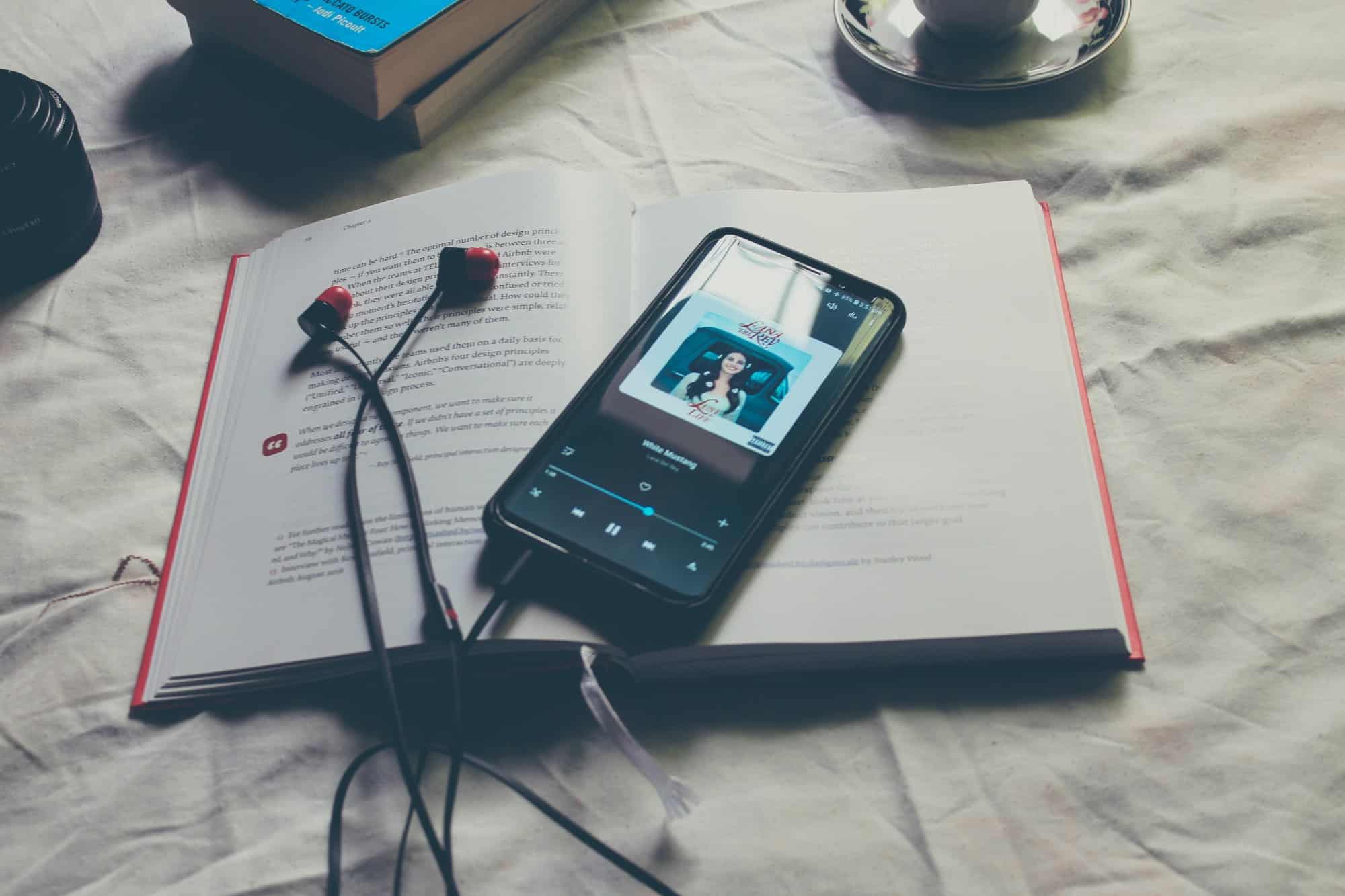
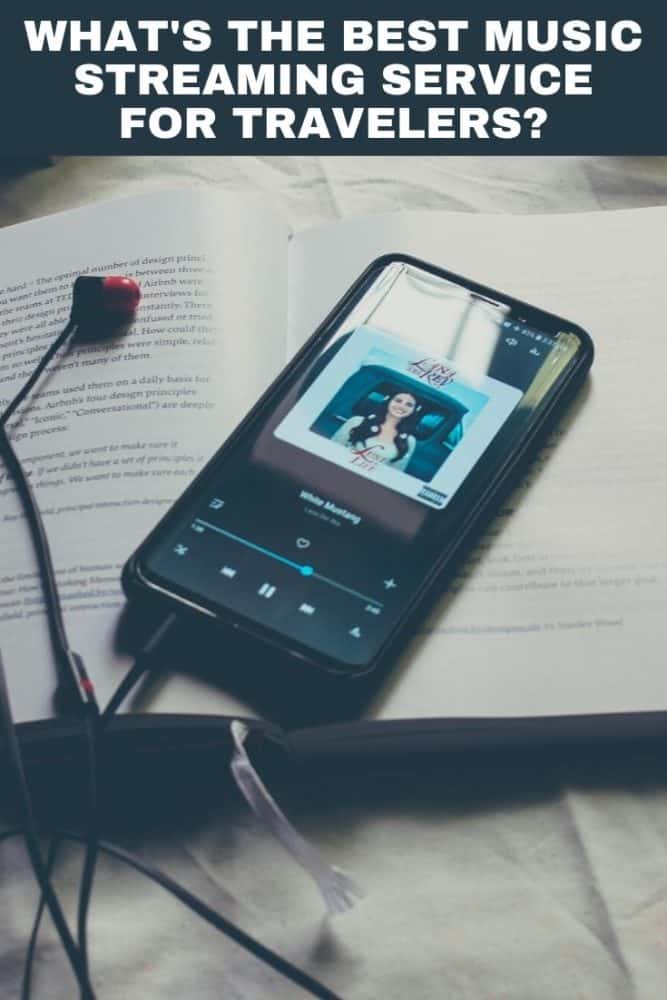






I find the free add-on to the Sirius service excellent.
Seems to work everywhere with the SXM app.
Not the best audio quality but nice mix of station options.
This Sirius support page suggests that service (via satellite or streaming) is only available in the United States, so it wouldn’t make the cut for international travelers. Could be useful for domestic travel in the US though.
I wouldn’t recommend Spotify for travellers if you are traveling for an extended period of time as your 9,99 EUR per month account does not allow more that 14days in another country
Hi Stephane,
I don’t think that’s the case — the Spotify support page we quote from and link to says that the 14-day restriction only applies to free accounts, and personally I’ve been using my Portuguese Spotify Premium account in the UK (and while spending 3-6 weeks per country while traveling) for the last couple of years without issue. Have you had a different experience when logged into a Premium account?
With support for 79 of 195 countries your suggesting that Spotify gets your for for a passing grade of 40%. With Apple and Youtube Music available in twice as many countries, Spotify shouldn’t even be considered in this list. Unless of course this is a sponsored post which, to be fair, is highly possible.
I don’t fully understand your first sentence due to the typo/repeated word. You’re welcome to disagree with our assessment, however, and if breadth of global coverage is the most important factor for you, you should absolutely choose a different service. That’s the good thing about having options, and why we list several alternatives. I’ve added a line at the bottom to spell out which services have the widest coverage to make it nice and clear for anyone else with the same priorities.
While it may be “highly possible” that this is a sponsored post, it isn’t. That’s simply not something we do, as per the disclosure linked to at the top of every page. Just because you disagree with somebody’s opinion doesn’t mean they’re being paid to provide it.